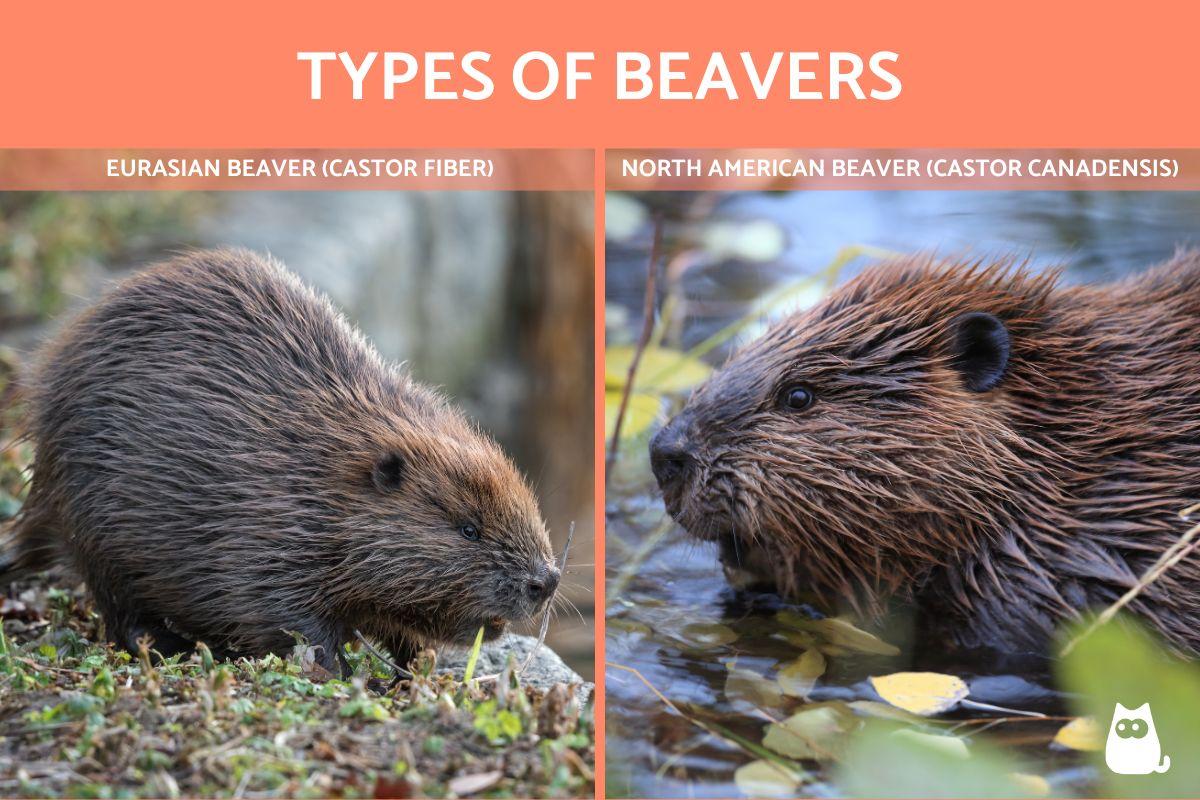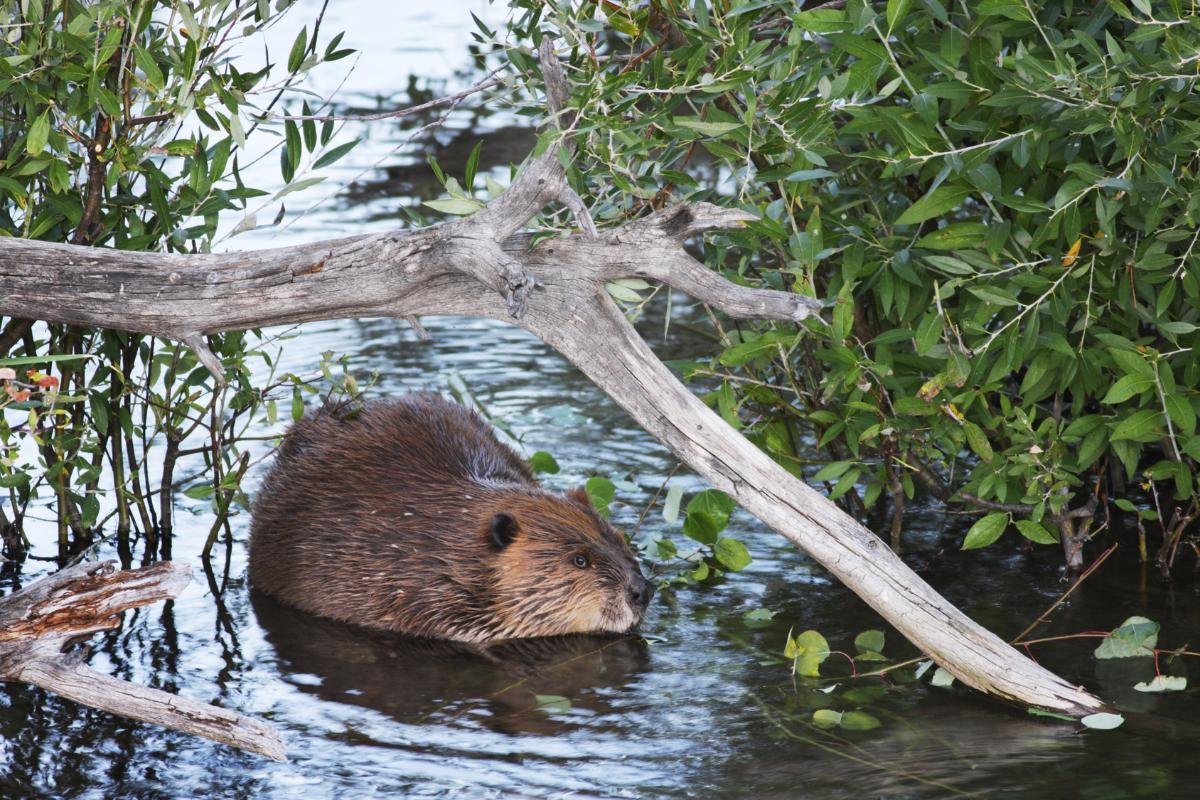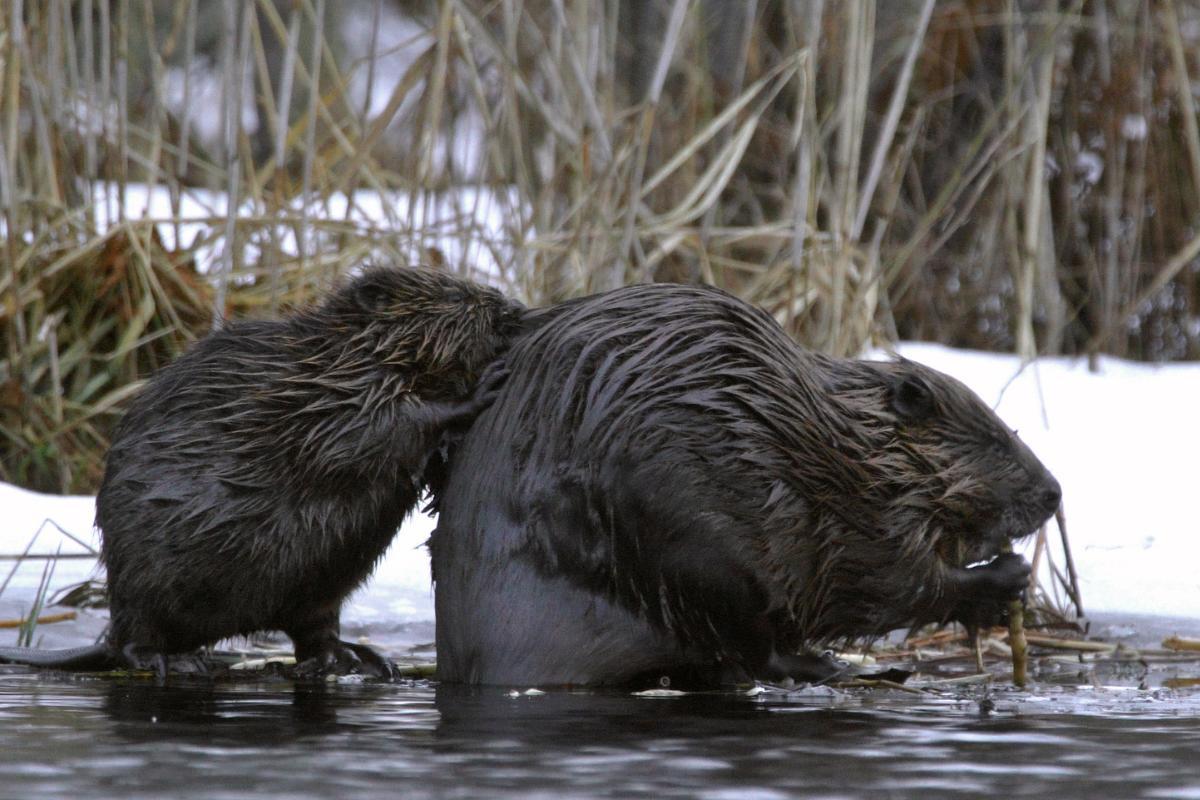How Many Types of Beavers Are There?


Beavers are iconic mammals renowned for their incredible engineering skills and aquatic lifestyle. These large rodents are native to North America and Eurasia, where they play a vital role in shaping their environment. Their dam-building activities create wetlands, which are crucial habitats for a diverse range of plant and animal species. These wetlands help to improve water quality, prevent erosion, and mitigate flooding. There are only two species of beavers living today, the North American beaver (Castor canadensis) and the Eurasian beaver (Castor fiber).
In the following AnimalWised article, we explain the different types of beavers, their unique characteristics, and incredible adaptations.
North American beaver (Castor canadensis)
The North American beaver, Castor canadensis, is a large rodent native to North America. Once widely distributed, its range has been reduced, but is now recovering through reintroduction efforts. Today, these mammals can be found in Canada, the United States, Mexico, and several European countries.
Physical characteristics
- Coat: the beaver's coat is typically reddish-brown or blackish-brown, shiny, and waterproof. The upper hairs are thicker than the lower ones, providing excellent insulation.
- Ears: the beaver has short, round, dark brown ears.
- Legs: the front legs are shorter than the back legs, making the beaver taller at the rear. The hind legs have webbing between the toes, aiding in their semi-aquatic lifestyle.
- Skull and teeth: the beaver has a large skull and robust teeth, essential for cutting hardwoods like oaks and maples to build dams. The upper incisors are about 5 mm wide and 25 mm long and grow continuously throughout the beaver's life.
- Aquatic adaptations: the beaver's nostrils, ears, and eye membranes close when submerged, preventing water from entering.
- Anal glands: both males and females have anal glands at the base of the tail, which produce a substance used for marking territory and grooming.
- Tail: the tail is wide and flat, providing stability on land and serving as a rudder while swimming.
- Size and weight: North American beavers weigh between 13 and 32 kg (29-70 lbs) and measure between 90 cm and 1.10 m (35-43 inches) in length.
Habitat
North American beavers inhabit areas near lakes and streams with abundant food and wood supplies. They live in lodges built on islands or along the shores of ponds or lakes. These lodges are usually slightly above water level and have one or two entrances leading to a central chamber made of branches, moss, and mud.
Beavers are known for their dam-building abilities, which allow them to control water flow and create their habitats. In areas with slow currents, their dams are straight, but in faster currents, they construct curved dams for added stability.
Diet
The North American beaver is primarily a herbivore. Their diet consists mainly of the bark, twigs, and leaves of woody plants, especially those found near water bodies. Trees like willow, aspen, and cottonwood are favorites.
In addition to tree-based foods, beavers also consume aquatic plants, such as water lilies and reeds, during warmer months. To ensure a food supply during winter, they engage in food caching, storing branches and logs underwater near their lodges.
Behavior
North American beavers are highly social creatures, living in family groups. They are primarily nocturnal but can be active during the day. Known for their industrious nature, they construct dams, lodges, and canals to create suitable habitats.
Beavers communicate through a combination of vocalizations, body language, and scent marking. Their strong territorial behavior ensures the protection of their food supply and living space. Interestingly, their flat, scaly tails serve multiple purposes, including propulsion in water, support while working on land, and a warning signal when slapped on the water's surface.
Conservation status
Currently, the North American beaver is classified as a species of least concern. However, hunting for fur and logging pose threats to their populations. Conservation efforts are crucial to maintaining their habitats and populations.
Interested in animal behavior? Discover which creatures are the most loyal to their mates in our related article.

Eurasian beaver (Castor fiber)
The Eurasian beaver, Castor fiber, is a large rodent native to Europe and Asia. Once widespread, its population declined dramatically due to overhunting. Thanks to reintroduction efforts, it's now thriving in many parts of Europe, though it remains extinct in several countries.
Physical characteristics
- Size and weight: the Eurasian beaver weighs between 13 and 35 kg (29-77 lbs) and measures 73 cm to 1.35 m (29-53 inches) in length, making it one of the larger beaver species.
- Coat: this beaver has a two-layered coat: a soft and dense inner layer of dark gray fur, and an outer layer of stiff, long, reddish-brown hairs.
- Glands: it possesses two glands at the opening of the cloaca, producing a strong-smelling substance used for marking territory and waterproofing its fur.
- Ears and snout: the beaver has small ears and a blunt snout.
- Aquatic adaptations: when submerged, its ears, nostrils, and the nictitating membranes of its eyes close to keep water out.
- Tail: the tail is furless, wide, oval, and black.
- Paws: the hind feet are webbed, with a specialized grooming nail on the inner toes.
- Skull and teeth: the Eurasian beaver has a smaller skull compared to the North American beaver. It features a skin fold in its mouth that allows it to gnaw on branches underwater. Its incisor teeth are notably large.
- Sexual dimorphism: males and females are quite similar, although females are slightly larger.
Habitat
The Eurasian beaver thrives in semi-aquatic habitats, typically found near streams, lakes, ditches, and swamps. It prefers areas bordered by forests but can also inhabit agricultural and suburban regions. This species can survive in regions with months of ice, thanks to the presence of water. It favors still waters or slow currents for its habitat.
Diet
The Eurasian beaver is primarily a herbivore, with a diet centered around woody vegetation. They have a particular fondness for trees like willow, aspen, and birch, which they fell to access the bark and tender shoots. While they primarily consume plant matter, aquatic plants, grasses, and even some agricultural crops can supplement their diet, especially during times of scarcity.
Interestingly, beavers often store food underwater for consumption during winter months, a practice known as caching.
Behavior
Eurasian beavers are renowned for their impressive dam-building skills, which create valuable wetland habitats.Unlike their North American counterparts, Eurasian beavers often build smaller dams, but their ecological impact is significant. They play a crucial role in wetland restoration, improving water quality, reducing erosion, and enhancing biodiversity.
These rodents live in family groups, with monogamous pairs and their offspring working together to construct lodges and maintain their territory.
Conservation status
The Eurasian beaver is classified as a species of least concern. Historically, it was heavily hunted for its fur, meat, and castoreum (a secretion from its scent glands). Wetland alteration also posed significant threats. However, recent conservation efforts have led to a rapid population increase, and they currently face no major threats.
Did you know there are several animals that look like beavers? Learn more in our related article.

If you want to read similar articles to How Many Types of Beavers Are There?, we recommend you visit our Facts about the animal kingdom category.
- Anderson, R. (2002). Castor canadensis . Animal Diversity Web. Available at: https://animaldiversity.org/accounts/Castor_canadensis/
- Batbold, J., Batsaikhan, N., Shar, S., Hutterer, R., Kryštufek, B., Yigit, N., Mitsainas, G. & Palomo, L. ((2021). Castor fiber (amended version of 2016 assessment). The IUCN Red List of Threatened Species 2021: e.T4007A197499749.
- Cassola, F. (2016). Castor canadensis . The IUCN Red List of Threatened Species 2016: e.T4003A22187946. https://dx.doi.org/10.2305/IUCN.UK.2016-3.RLTS.T4003A22187946.en. Accessed on 30 July 2024.
- Holden, J. (2009). Beaver fiber . Animal Diversity Web. Available at: https://animaldiversity.org/accounts/Castor_fiber/







